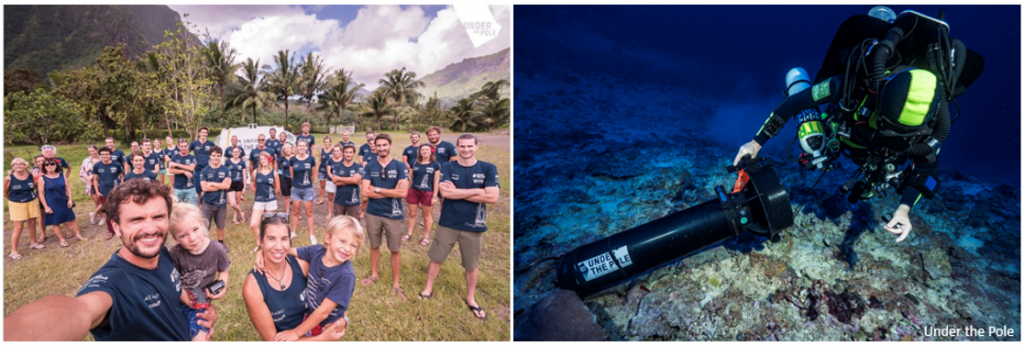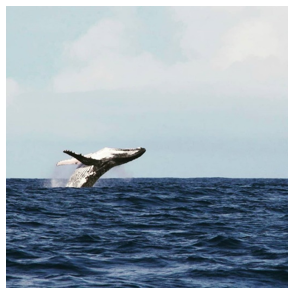Let me ask you: what does first come to your mind when thinking about French Polynesia? Pristine white sandy beaches, luxurious island landscapes, turquoise waters, tropical fruits and fancy colourful cocktails?

Well, it is! But this time, I travelled to French Polynesia to discover a completely different environment that is just starting to be explored thanks to novel technologies. This environment is called “mesophotic coral ecosystem” and has been receiving more and more attention in the recent years. Mesophotic coral ecosystems are found in tropical and subtropical regions at depths ranging from 30-40 meters and extending to over 150 meters. They are populated by a diversity of organisms such as corals, sponges, algae and fishes.
From September to December 2019, a special collaboration between the scientists from the CRIOBE (Centre de Recherches Insulaires et Observatoire de l’Environnement) and the team of technical divers and explorers of Under The Pole allowed the exploration of a specific site on the outer reef of the island of Moorea from the surface to 120 meters depth. This project, led by Dr Laetitia Hédouin, gathered scientists from different field of research and with different expertise, allowing the complete characterization of the site from the environmental conditions (light, temperature) to the organismal biodiversity and abundance.

Collecting samples and applying scientific diving techniques at such depth is challenging and requires a lot of preparation to ensure the security of the divers but also, to be able to do everything planned in the timeframe available. At 120 meters depth, the divers were able to stay for a maximum of 20 minutes, so every gesture has to be thought in advance to make the best out of that time. As part of my PhD research, I got the chance to participate in this special project and I focused on studying the antipatharians encountered by the divers on the site.
Antipatharians, also known as black corals, are anthozoans hexacorallians of distinct morphologies. They can be found from the tropics to the poles and studies have revealed their presence up to 8600 km deep. Despite this large distribution, they remain very poorly studied, mainly due to the logistical constraints associated with their study. Black corals can form dense “beds/forests” in several parts of the world and have been shown to play an important ecological role, in part due to their interactions with many organisms. In French Polynesia, the presence of black corals is known by local populations, in part because they have been fished for the jewellery industry in the past. Nonetheless, no scientific description of the assemblage of black coral species and distribution has ever been made in French Polynesia, and this represented one of my objective during this field trip (Results coming soon …).

Another main aspect of my mission in the CRIOBE implied the maintenance of mesophotic antipatharians in aquaria to get a first insight into the metabolism of these organisms. We submitted them to different temperature treatments and evaluated their responses to heat stress through a combination of approaches, from a physiological to a subcellular biological organization level. Our preliminary results are already quite exciting… but this shall be for a latter post!
I would like to thank the Fonds Léopold III pour l’Exploration de la Nature for their financial support in this project. I also thank all the team from Under The Pole, all my colleagues and friends from the CRIOBE and all the wonderful persons I had the chance to meet and share moments with during this mission: Laetitia, Gonzalo, Yann, Alex, Caro, Anne, Fred, Benoit, Frank, Yannick, Françoise, Fabio, Lorenzo and his pastas, Kim, Ian, José, Alex and their cute baby black tips, Adeline, Julien, Camille, Will, Rohan, Zara (the Australian team), Elénonore and Aude, Pascal, Gilles, Cécile, Elina, Annaïg, Minouche & Minette. I hope to see you all very soon, either sharing a cold beer with fries in Belgium, or a pineapple juice with “poisson cru au lait de coco” in Moorea…

